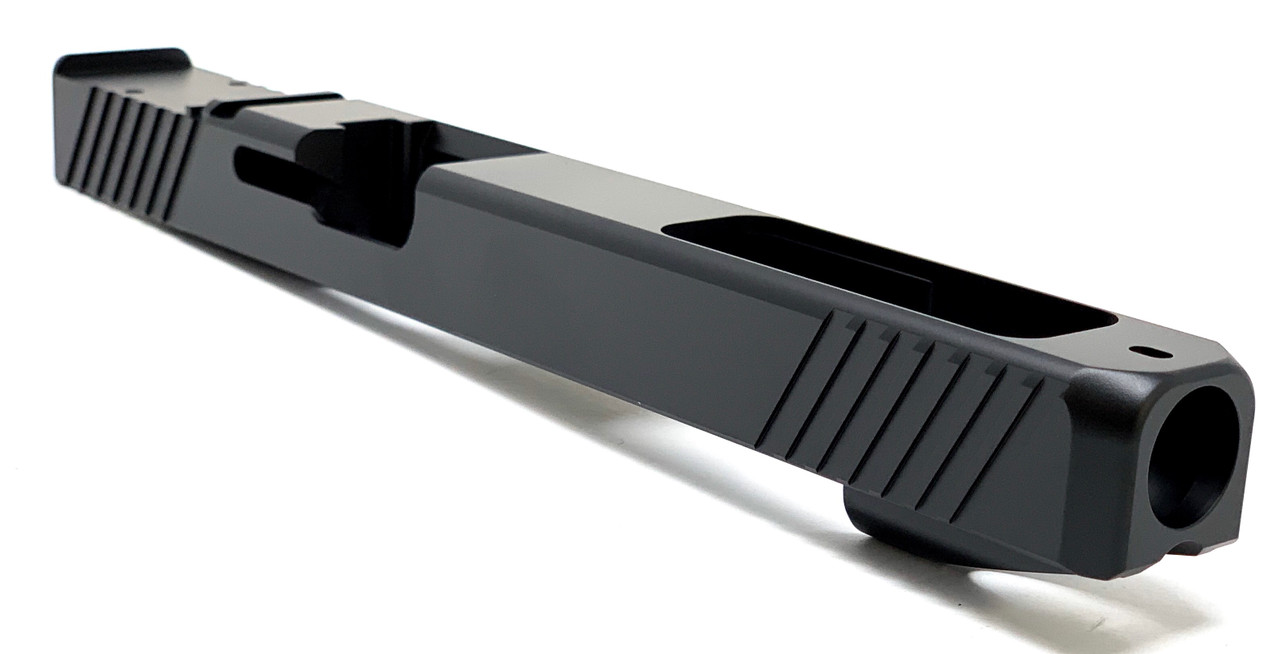Introduction to slide upgrades and purpose
When a shooter considers an upgrade, the Glock 19 slide often becomes the first part on the checklist. The appeal of the Glock 19 slide is straightforward: it is a component that directly affects sighting, recoil behavior, and the overall feel of the pistol in carry and duty roles. Upgrading or selecting a particular Glock 19 slide marries functional changes with ergonomic preferences, and many owners discover that relatively small modifications to the slide deliver outsized returns in everyday handling and on-the-job performance. Whether the goal is to reduce muzzle flip, accept a micro red dot, or simply improve the aesthetics and resilience of the firearm, the Glock 19 slide is central to that conversation.
How slide design affects practical accuracy
A well-designed Glock 19 slide can make aligning sights feel easier and more repeatable under stress. The sight radius on a compact platform like the Glock 19 is limited by the slide length, and selecting a Glock 19 slide with refined sights or optic-ready cuts can materially shift the way a shooter presents and acquires targets. Beyond sight radius, the mass and geometry of the Glock 19 slide influence reciprocating weight and how the pistol manages recoil energy. For many users, swapping to a precisely machined Glock 19 slide yields smoother cycling and a steadier sight picture during rapid strings of fire.
Materials, coatings, and long-term durability
Materials and surface finishes play an outsized role in the lifespan of a slide, and the Glock 19 slide is available in a variety of metallurgies and coatings. From standard Tenifer-like treatments to modern DLC and Cerakote options, the treatment on a Glock 19 slide affects corrosion resistance, wear characteristics, and how easily the slide maintains a clean appearance after heavy use. Choosing a Glock 19 slide finished for the environment in which it will operate — whether maritime, dusty, or high-humidity — is a practical decision that pays dividends over time. Durability matters when a slide is part of a carry or duty system that will see daily handling and repeated cycling.
Optic readiness and modern sighting solutions
Optic-ready Glock 19 slide models have lowered the barrier to red-dot adoption for compact pistols. A Glock 19 slide configured for reflex sights saves the owner from custom milling or unreliable adapters, making the transition to modern aiming faster and more robust. For service-oriented roles or concealed carriers who prioritize rapid target acquisition, a Glock 19 slide that accepts a micro red dot changes engagement dynamics without demanding a complete platform change. The slide becomes a modular interface between human shooter and sighting technology, and when paired correctly the benefits are both tactical and ergonomic.
Handling, recoil management, and balance
The mass and contour of a slide contribute to the way the pistol returns to battery and the shooter perceives recoil. A performance-oriented Glock 19 slide can help tame muzzle rise and impart a sensation of increased control, particularly when combined with compatible springs and guide rod choices. For those who carry daily or use a Glock for duty, the Glock 19 slide must balance improved controllability with reliability under varied conditions. A slide that is too light can increase bolt speed and wear, while one carefully engineered for purpose can smooth recoil impulse and improve split times during practical drills.
Fitment, compatibility, and reliability
When upgrading to an aftermarket Glock 19 slide, fitment is non-negotiable for reliability. The tolerances between slide and frame determine not only smooth operation but also longevity of pins and internal parts. A well-fitted Glock 19 slide should cycle with factory magazines and standard springs while maintaining predictable lockup and ejection patterns. Owners who invest in a specialized Glock 19 slide should also consider backup iron sight compatibility and whether the slide’s features — serrations, lightening cuts, or optic plates — affect holster fit and concealment. Thoughtful selection ensures the slide performs without introducing new maintenance demands.
Training implications and real-world use
Hardware only helps when practice follows, and the Glock 19 slide is no exception. Shooters who transition to a different slide profile or add an optic through the Glock 19 slide must spend time in dry-fire and live-fire practice so that muscle memory and presentation adapt to the new balance and sighting method. A Glock 19 slide that improves aiming speed will not replace fundamentals; instead it amplifies what well-trained hands and eyes can accomplish. Those who rely on a Glock daily should view slide upgrades as part of a holistic approach that includes holster drills, reloading under stress, and malfunction clearance practice.
Final thoughts on choosing the right slide
Selecting the right Glock 19 slide is a personal and mission-driven decision. For everyday carry and duty applications, the ideal Glock 19 slide strikes a balance between enhanced aiming capability, reliable cycling, and real-world durability. When chosen with attention to materials, mounting compatibility, and how it changes the pistol’s handling, a Glock 19 slide becomes more than a cosmetic tweak — it becomes a tangible improvement to performance and confidence. The best outcomes come when familiarization and training follow the upgrade, ensuring the slide does what it promises when it matters most.




